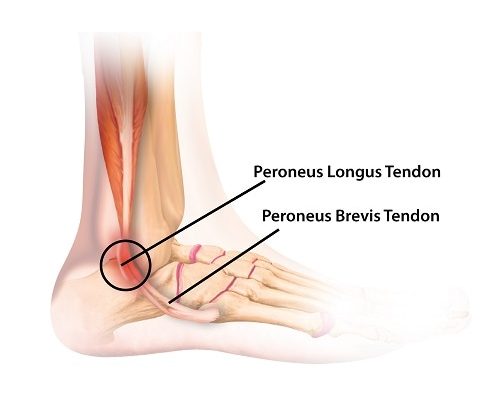What does it mean to ‘warm up’?
Before the start of a training session or a competitive match, it is usually standard practice for sport professionals and athletes to warm up. The main purpose of a warm up is to limber up the body and prepare it for the increased physical intensity it will be undergoing.
By warming up effectively, this can reduce the stress on the muscles and allow them to work efficiently; it also prepares the mind for the activity ahead and reduces the risk of muscle stiffness, which is a leading precursor of muscular injuries.
Warming up is likewise beneficial in increasing the respiratory rate and heart rate, which in turn allow more oxygenated blood flow to the muscles that will be involved in the sporting activity allowing for a better session or match.
Benefits of warming up
The potential benefits of warming up properly cannot be ignored, as well as a possible improvement in performance, an effective warm up can also provide the following benefits:
- Increased and improved blood flow across the active muscle tissues increasing muscle temperature and metabolism.
- Increased work rate, which allows for readiness when the actual activity begins
- Mental focus and readiness for the training session or competition
- Improved flexibility and range of movement whilst lowering the chance of injury
- Muscle stiffness is reduced
- Aided nerve transmission and muscle metabolism at higher levels
- Increased adrenaline
How do you warm up effectively?
There are various stages to an effective warm up and ensuring that a gradual build up of activities targeting various muscle groups and aspects of the specific sport being warmed up for are essential.
There are four key phases when warming up, and ensuring that equal care is taken in performing all four can greatly reduce the risk of sport injuries. So what are these four phases? And how do they contribute to a total mental and physical readiness for the session ahead?
General warm up, static stretching, sport specific warm up and dynamic stretching (GSSD)
The four stages consist of interchanging warm up and stretching sessions. There is however a general misconception that stretching before a sporting activity is the warm-up, in fact this is not the case and stretching is only a part of warming up. Combining stretching with other elements in the warm up is what reduces the risk of injuries.
So what do these four stages consist of?
General warm-Up
This first stage consists of very light physical activities that raise the heart rate and body temperature slightly. This can include activities such as:
- Walking
- Skipping
- Jogging
- Light aerobic movements
These help in increasing blood flow across the body, getting the muscles prepared. The individual or a sporting coach usually governs the intensity and length of the general warm up based on their perceived fitness levels or needs, but a standard average duration would be between 3-5 minutes.
Static stretching
The second stage involves the flexing and stretching of muscles, this is done in order to reduce muscle stiffness and increase muscle flexibility. As research shows static stretching is usually more beneficial as part of a cool down session, but can also provide benefits in warming up when done in short-hold form (3-7 seconds per muscle group).
The process consists of gradually extending a muscle to its maximum point and holding it for a few seconds. Static stretches can be passive or active.
- Active: extra force is applied by the individual for greater intensity
- Passive: extra force is applied by an external force (e.g. partner or device) to increase intensity
Overall this section of the warm up should last no longer than a minute or two. Below is an example of stretches that can be done whilst warming up.
Warm up exercises

- Latissimus dorsi / deltoid stretch (arms and shoulders) – this provides limberness in the upper arms and shoulders allowing freer movement and flexibility, this is popular in sports such as basketball, rugby, javelin, discus and even football (especially for goalkeepers).
- Pectoral / bicep stretch (arms and chest) – this is a light exercise that reduces tension on the chest and arms.
- Tricep stretch (arms) – helps to provide easier movement of the arms, popular with those who play tennis and basketball.
- Windmill bicep stretch (arms) – increases mobility and loosens up the muscles in the arms and additionally the shoulders and chest.
- Gluteal and Lumbar rotation stretch (mid and lower back) – increases flexibility and mobility in the lower back region and hips allowing for easier movement and rotation at the spine.
- Adductor stretch (groin and pelvic muscle) – this static stretch helps with the movement around the hips and the thighs. It is most suitable for any sporting event that requires running, sprinting or swimming.
- Gluteal stretch (pelvic muscle and hamstrings) – a very light stretch that stretches the gluteal muscles as well as those at the back of the legs.
- Quadriceps stretch (front thighs)– this works primarily on the quads and increases flexibility, blood circulation and reduces the risk of knee of back pain.
- Toe touching stretch (lower back, pelvis and hamstrings) – if done correctly this stretch can really improve the mobility of multiple muscle groups especially, care should be taken not to stretch too far to avoid injury.
Sport specific warm ups
By this stage the heart rate should be raised to an active level and the muscles limber enough to focus on specific warm ups designed for the sport/activity the individual will be participating in.
An example of activities that can be done for specific sports include:
- Tennis – controlled racket swings, lunge walks, buttock kicks, torso rotation, arm circles and jumping side steps
- Football – (depending on position) lunges, high knees, heel flicks, jockeying, acceleration runs, side steps with direction change, leg raises and arm circles
- Cycling – lunges, leg raises, chest hugs (bringing the knee to the chest), pedalling leg movements,
- Basketball – acceleration runs, ball passing/catching, high knees, arm circles, rim touch, vertical jumps
- Swimming – arm circles, stroke movement, forward lunges, standing T’s, 90/90 stretch, relaxed swim, deep breaths
Sport specific warm ups can differ depending on the level of competition and the needs of the individual but should not be ignored, as they tackle muscle groups that are at a higher threat of injury reducing this risk. Sport specific warm ups should usually last for 5-7 minutes on average
Dynamic stretching
This is the final stage of the warm up and is at a higher intensity compared to the static stretching. These stretches are best done when the body as reached a certain level of flexibility and limberness. It is essential that these stretches are done correctly and are controlled, as there is an increased risk of injury if done forcefully.
Dynamic stretching usually involves a controlled motion, either swing or bounce of the specific body part increasing gradually. It is essential that stretches performed are specific to the individual’s sport. This should last for another 2-3 minutes but can differ based on the individual’s activity levels.
For those in amateur sports or those looking to improve their general fitness 7-10mins of warming up would be ideal. For professional athletes and sports people competing at a higher level, the warm up routine duration is totally dependant on their needs and can vary, it is therefore important that enough time is taken to warm up sufficiently.
[trx_infobox style=”info” closeable=”no” bg_color=”#F8F8F8″ top=”inherit” bottom=”inherit” left=”inherit” right=”inherit”]SOURCES
- KNUDSON, D et al. Acute Effects of Stretching Are Not Evident in the Kinematics of the Vertical Jump, Journal of Strength & Conditioning Research, 2001.15 (1), p. 98-101
- Acefitness.org (2016). What are the different types of stretching? https://www.acefitness.org/blog/2966/what-are-the-different-types-of-stretching [/trx_infobox]



